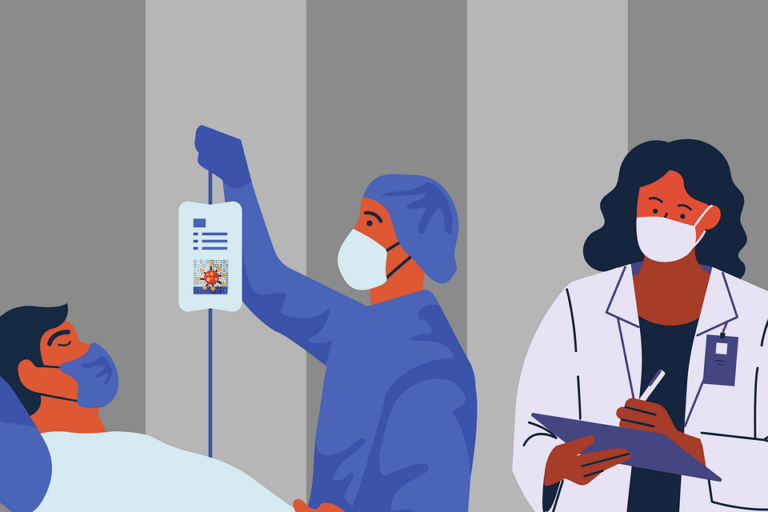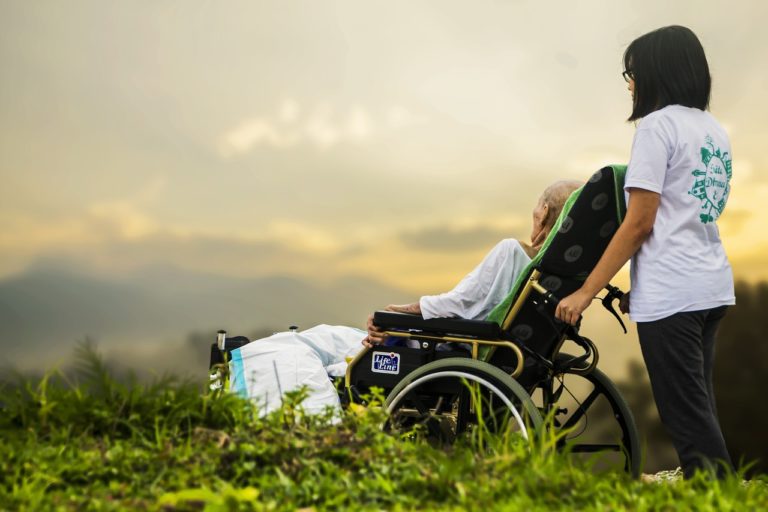Book Appointment Now

Community/Public Health Nursing
Community/public health nursing is a vital specialty that focuses on promoting health, preventing disease, and improving the well-being of populations. Unlike traditional nursing roles that center on individual care, this field emphasizes population-focused interventions, addressing social determinants of health, and fostering community resilience. In today’s rapidly evolving healthcare landscape, community/public health nursing plays a crucial role in advancing health equity and improving outcomes at the population level. This article explores the scope, roles, challenges, and future directions of community/public health nursing, supported by extensive in-text citations.
Our nursing experts can deliver 100% custom paper about community/public health nursing according to your order instructions.
Write my nursing essay
The Scope of Community/Public Health Nursing
Community/public health nursing extends beyond the confines of hospitals to serve individuals, families, and entire communities. The American Public Health Association (APHA, 2021) defines public health nursing as the practice of promoting and protecting the health of populations using knowledge from nursing, social, and public health sciences. This field involves a wide range of activities, from conducting health assessments to developing programs aimed at preventing chronic diseases and reducing health disparities.
Nurses in this specialty often address complex societal issues such as poverty, access to care, and environmental health hazards. By focusing on the broader determinants of health, public health nurses contribute to building healthier communities (Edelman & Kudzma, 2022).
Roles and Responsibilities of Community/Public Health Nurses
Health Promotion and Disease Prevention
Public health nurses play a central role in educating communities about healthy lifestyles and preventive measures. For example, they organize vaccination drives, conduct health screenings, and provide education on nutrition and exercise (World Health Organization [WHO], 2021). These activities help reduce the prevalence of preventable diseases, such as diabetes, hypertension, and certain types of cancer.
Community Assessments
A key responsibility of community/public health nurses is to assess the health needs of populations. This involves collecting data through surveys, focus groups, and interviews to identify risk factors and prioritize interventions (Stanhope & Lancaster, 2020). For instance, a nurse might evaluate the impact of food insecurity in a low-income neighborhood and collaborate with local organizations to establish food assistance programs.
Addressing Social Determinants of Health
Social determinants of health, such as income, education, and housing, significantly influence health outcomes. Community/public health nurses advocate for policies and programs that address these factors to reduce inequities (Healthy People 2030, 2021). For example, they may partner with schools to implement health education programs or work with policymakers to increase funding for underserved areas.
Advocacy and Collaboration
Collaboration is at the heart of public health nursing. Nurses work alongside community leaders, public health officials, and other stakeholders to develop and implement initiatives that promote health equity (Edelman & Kudzma, 2022). Advocacy efforts often focus on securing resources for vulnerable populations, such as affordable housing and access to healthcare services.
Core Principles of Community/Public Health Nursing
Community/public health nursing operates on a foundation of core principles that guide its practice. These principles emphasize the promotion of health, prevention of disease, and the well-being of populations rather than individual patients. By focusing on the broader determinants of health and addressing systemic issues, these principles ensure the equitable and sustainable delivery of healthcare services. Let’s explore these principles in detail:
1. Population-Focused Care
The primary principle of community/public health nursing is that care is population-focused. Unlike clinical nursing, which is centered on individual patients, public health nursing aims to improve health outcomes for entire populations or subgroups.
- Proactive Approach: Nurses identify health trends within communities and design interventions tailored to prevent disease and promote wellness.
- Example: Implementing community-wide vaccination programs to reduce the prevalence of infectious diseases such as measles.
Population-focused care also involves considering diverse demographics such as age, gender, ethnicity, and socioeconomic factors to ensure inclusivity in health interventions (Stanhope & Lancaster, 2020).
2. Emphasis on Health Equity and Access
Community/public health nursing is deeply rooted in the principle of health equity, which ensures that all individuals, regardless of their socioeconomic background, have the opportunity to achieve optimal health.
- Addressing Disparities: Nurses work to reduce health disparities caused by poverty, systemic discrimination, or geographic isolation. They advocate for resources and policies to improve healthcare access for underserved populations.
- Example: Public health nurses might collaborate with local governments to establish mobile clinics in rural areas.
By targeting vulnerable populations and addressing the social determinants of health, public health nurses help bridge the gap between healthcare resources and those in need (Healthy People 2030, 2021).
3. Prevention and Promotion
The dual focus on prevention and health promotion is a cornerstone of public health nursing. Prevention strategies aim to reduce the risk of diseases before they occur, while promotion initiatives encourage healthy behaviors and lifestyles.
- Primary Prevention: This involves preventing disease or injury before it occurs. Examples include immunization campaigns and health education about safe hygiene practices.
- Secondary Prevention: Focuses on early detection and intervention. For instance, organizing health screenings for conditions like diabetes or hypertension.
- Tertiary Prevention: Aims to manage chronic conditions and prevent complications. Examples include rehabilitation programs for stroke survivors or heart patients (Edelman & Kudzma, 2022).
Public health nurses balance these levels of prevention to optimize long-term health outcomes for individuals and communities.
4. Cultural Competence and Inclusivity
Cultural competence is the ability of nurses to deliver care that respects the cultural values, beliefs, and practices of diverse populations. Public health nurses must consider cultural norms when designing and implementing interventions to ensure effectiveness and community acceptance.
- Key Elements of Cultural Competence:
- Understanding and respecting cultural differences.
- Tailoring health messages to specific cultural groups.
- Collaborating with community leaders to build trust and engagement.
- Example: In a community with significant immigrant populations, public health nurses might provide multilingual health education materials and employ interpreters to improve communication.
Cultural competence ensures that healthcare interventions are inclusive, equitable, and sensitive to the needs of diverse populations (Stanhope & Lancaster, 2020).
5. Evidence-Based Practice
Another core principle of community/public health nursing is the integration of evidence-based practices (EBP). Nurses rely on research and data to design and implement interventions that are proven to be effective.
- Data-Driven Interventions: Nurses assess community health needs using epidemiological data, community health assessments, and academic research.
- Example: If a community has a high prevalence of obesity, public health nurses may develop exercise programs and nutritional workshops based on scientific evidence about weight management.
Evidence-based practice ensures that resources are utilized effectively and that interventions yield measurable improvements in population health (Edelman & Kudzma, 2022).
6. Collaboration and Partnership
Collaboration is essential in community/public health nursing, as no single profession or organization can address the complex factors affecting community health. Public health nurses partner with other healthcare professionals, government agencies, community leaders, and non-profit organizations to achieve shared goals.
- Multisectoral Collaboration: Working with educators, housing authorities, and law enforcement to address the social determinants of health.
- Example: Collaborating with schools to implement health education programs for children or working with urban planners to create safe walking paths that encourage physical activity.
This principle ensures that public health efforts are comprehensive and address both medical and non-medical factors influencing health outcomes.
7. Advocacy for Vulnerable Populations
Advocacy is a defining principle of community/public health nursing. Nurses act as the voice for vulnerable populations who may lack the ability or resources to advocate for themselves.
- Policy Advocacy: Public health nurses advocate for policy changes at the local, state, or national levels to improve healthcare access and equity.
- Example: Advocating for Medicaid expansion to provide healthcare coverage for low-income families.
- Community Advocacy: Nurses work directly within communities to identify and address specific health concerns, such as unsafe drinking water or inadequate housing.
Through advocacy, public health nurses drive systemic changes that benefit the health of entire populations.
8. Ethical Practice
Ethics play a crucial role in community/public health nursing. Nurses must balance individual rights with the greater good of the community. They are guided by ethical principles such as beneficence, non-maleficence, autonomy, and justice.
- Example of Ethical Dilemma: During an infectious disease outbreak, a nurse may face the ethical challenge of prioritizing quarantine measures that restrict individual freedoms to protect public health.
Ethical practice ensures that public health interventions are both effective and respectful of individual dignity and community values (Stanhope & Lancaster, 2020).
8 Core principles of community/public health nursing
The core principles of community/public health nursing—population-focused care, health equity, prevention and promotion, cultural competence, evidence-based practice, collaboration, advocacy, and ethical practice—form the foundation for addressing the complex health needs of communities. These principles ensure that public health nursing remains a holistic, equitable, and impactful practice aimed at creating healthier populations and reducing disparities. By adhering to these principles, public health nurses contribute significantly to advancing societal well-being.
Key Areas of Practice
| Key Area of Practice | Description | Examples |
|---|---|---|
| Maternal and Child Health | Focuses on improving the health of mothers and children to reduce mortality and enhance long-term outcomes. | Prenatal care, promoting breastfeeding, childhood immunizations. |
| Infectious Disease Prevention | Aims to control and prevent the spread of infectious diseases through education, vaccination, and early detection. | Vaccination campaigns, hygiene education, contact tracing during outbreaks. |
| Chronic Disease Management | Supports patients in managing long-term conditions to improve their quality of life and prevent complications. | Diabetes education programs, promoting adherence to treatment for hypertension, lifestyle counseling. |
| Mental Health Promotion | Addresses mental health needs through community education, early intervention, and stigma reduction. | Organizing mental health awareness workshops, providing referrals to mental health services. |
| Emergency Preparedness | Prepares communities for disasters and public health emergencies, ensuring rapid and effective responses. | Developing disaster response plans, conducting community drills, providing care during natural disasters. |
Challenges in Community/Public Health Nursing
Community/public health nursing faces numerous challenges that hinder its ability to achieve optimal outcomes. These issues stem from systemic barriers, resource limitations, and evolving health demands.
1. Resource Constraints
One of the most significant challenges in community/public health nursing is the lack of adequate resources. Public health programs often face limited funding, which affects staffing, training, and the availability of essential equipment. Rural and underserved communities are particularly vulnerable, as they frequently lack access to basic healthcare infrastructure (American Public Health Association [APHA], 2021).
For instance, in low-income areas, public health nurses often encounter insufficient supplies for vaccination programs or chronic disease management. This shortage reduces the effectiveness of health promotion initiatives and increases the burden on already overworked nurses.
2. Health Inequities and Disparities
Systemic health inequities are another pressing challenge. Social determinants of health, such as poverty, education, and housing, disproportionately affect marginalized populations. Public health nurses often witness the direct impact of these disparities, such as higher rates of chronic diseases and reduced life expectancy in underserved communities (Healthy People 2030, 2021).
Addressing these inequities is complex, as nurses must navigate systemic barriers while advocating for policy changes. Moreover, the stigma surrounding certain health conditions, such as mental illness or substance abuse, further complicates access to care.
3. Workforce Shortages and Burnout
Public health nursing is experiencing a significant workforce shortage, exacerbated by an aging workforce and increased demand for healthcare services. According to Stanhope and Lancaster (2020), many public health nurses report high levels of stress and burnout due to excessive workloads and emotional strain.
The COVID-19 pandemic highlighted these challenges, with public health nurses working extended hours to manage vaccination drives, contact tracing, and community education. Burnout not only affects individual nurses but also compromises the quality of care provided to communities.
4. Cultural and Linguistic Barriers
Public health nurses often serve diverse populations with varying cultural beliefs and practices. Miscommunication due to language differences or cultural misunderstandings can hinder the effectiveness of interventions (Edelman & Kudzma, 2022).
For example, in communities where traditional healing practices are valued, public health nurses may struggle to introduce evidence-based treatments without first building trust and understanding cultural norms. Bridging these gaps requires specialized training in cultural competence and tailored communication strategies.
5. Rapidly Evolving Public Health Threats
The emergence of new public health threats, such as pandemics, antimicrobial resistance, and climate change, adds complexity to the role of public health nurses. These challenges demand rapid responses, innovative solutions, and continuous professional development (World Health Organization [WHO], 2021).
During the COVID-19 pandemic, for instance, public health nurses had to adapt to changing guidelines, manage public fear, and address misinformation. This highlights the need for flexibility and resilience in this field.
Innovations and Future Directions in Community/Public Health Nursing
Despite these challenges, community/public health nursing is evolving through innovations and forward-looking strategies aimed at enhancing its effectiveness.
1. Technological Advancements in Public Health Nursing
Technology is revolutionizing the delivery of public health services. Public health nurses now leverage telehealth platforms, mobile apps, and wearable devices to monitor health outcomes and provide care remotely (Edelman & Kudzma, 2022).
- Telehealth: Telehealth has expanded access to care for rural and underserved populations. Public health nurses use video consultations to educate patients, manage chronic diseases, and conduct follow-ups.
- Data Analytics: Advanced data analytics tools help public health nurses identify trends, track disease outbreaks, and allocate resources efficiently. For example, predictive modeling can anticipate flu outbreaks, enabling proactive vaccination campaigns.
- Mobile Health Apps: Mobile apps allow patients to track their health metrics, such as blood pressure and glucose levels. Public health nurses can use these tools to provide personalized advice and ensure adherence to treatment plans.
2. Interprofessional Collaboration
The future of public health nursing lies in interdisciplinary collaboration. Nurses are increasingly working alongside physicians, social workers, educators, and community leaders to address complex health challenges. This collaborative approach ensures holistic care by addressing medical, social, and environmental factors simultaneously (Stanhope & Lancaster, 2020).
For example, a public health nurse might partner with local schools to implement health education programs or collaborate with housing authorities to improve living conditions for low-income families.
3. Policy Advocacy and Leadership
Public health nurses are taking on greater leadership roles in advocating for health equity and systemic change. By influencing policies related to healthcare funding, preventive care, and mental health services, nurses can drive meaningful improvements in population health (APHA, 2021).
Policy advocacy also involves addressing environmental health issues. For instance, public health nurses are advocating for regulations to reduce air pollution and mitigate the health impacts of climate change.
4. Emphasis on Preventive Care
The shift from treatment-based care to prevention-focused approaches is a key direction for public health nursing. Programs such as smoking cessation, obesity prevention, and mental health awareness aim to reduce the burden of preventable diseases (WHO, 2021).
Public health nurses are also focusing on upstream interventions that address the root causes of poor health, such as poverty, education, and access to nutritious food. By tackling these issues, they aim to improve long-term health outcomes.
5. Embracing Cultural Competence and Diversity
As communities become increasingly diverse, cultural competence will remain a priority. Future public health initiatives will focus on training nurses to deliver culturally appropriate care and address the unique needs of various populations (Healthy People 2030, 2021).
For instance, community health programs may incorporate bilingual nurses or partner with cultural mediators to ensure effective communication and trust-building with non-English-speaking populations.
6. Preparing for Emerging Public Health Threats
The future of public health nursing will also involve enhanced preparation for emerging threats such as pandemics, bioterrorism, and climate-related disasters. Public health nurses will be instrumental in developing emergency response plans, educating communities about preparedness, and providing frontline care during crises (WHO, 2021).
Simulation-based training and the integration of artificial intelligence in outbreak prediction are examples of how technology and preparedness are converging to strengthen public health responses.
The challenges faced by community/public health nursing, such as resource constraints, health inequities, and evolving health threats, highlight the complexity of this vital field. However, through technological innovations, interprofessional collaboration, and a focus on preventive care, public health nursing is poised to address these challenges effectively. By embracing cultural competence, advocating for equitable policies, and preparing for future threats, public health nurses will continue to play a pivotal role in improving population health and building resilient communities.
References
American Public Health Association (APHA). (2021). Public health nursing section. Retrieved from https://www.apha.org
Edelman, C. L., & Kudzma, E. C. (2022). Health promotion throughout the lifespan (10th ed.). Elsevier.
Healthy People 2030. (2021). Social determinants of health. Retrieved from https://health.gov/healthypeople
Stanhope, M., & Lancaster, J. (2020). Public health nursing: Population-centered health care in the community (10th ed.). Elsevier.
World Health Organization (WHO). (2021). Community health and well-being. Retrieved from https://www.who.int







